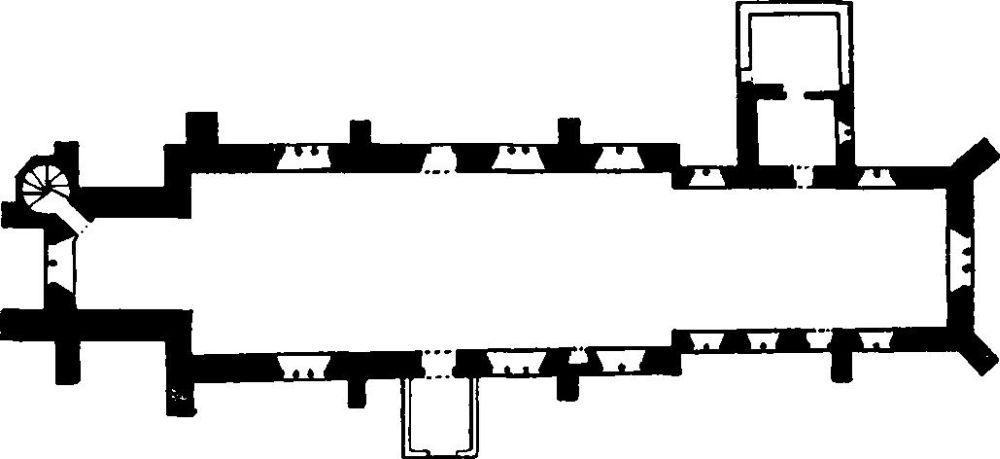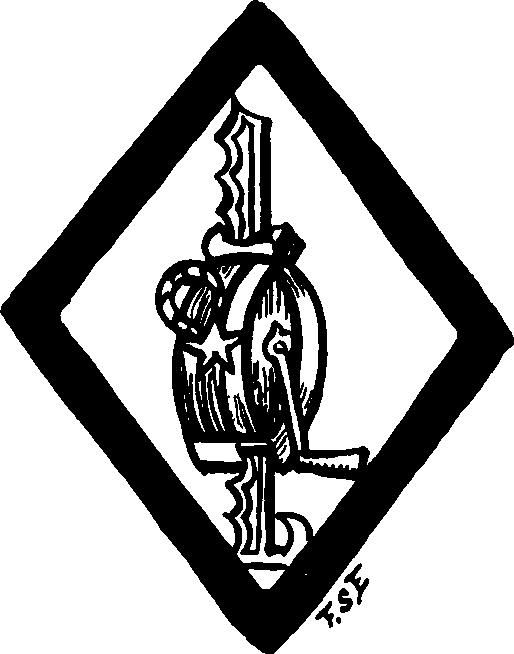An Inventory of the Historical Monuments in Essex, Volume 2, Central and South west. Originally published by His Majesty's Stationery Office, London, 1921.
This free content was digitised by double rekeying. All rights reserved.
'Springfield', in An Inventory of the Historical Monuments in Essex, Volume 2, Central and South west(London, 1921), British History Online https://prod.british-history.ac.uk/rchme/essex/vol2/pp218-220 [accessed 22 April 2025].
'Springfield', in An Inventory of the Historical Monuments in Essex, Volume 2, Central and South west(London, 1921), British History Online, accessed April 22, 2025, https://prod.british-history.ac.uk/rchme/essex/vol2/pp218-220.
"Springfield". An Inventory of the Historical Monuments in Essex, Volume 2, Central and South west. (London, 1921), British History Online. Web. 22 April 2025. https://prod.british-history.ac.uk/rchme/essex/vol2/pp218-220.
In this section
86. SPRINGFIELD. (F.c.)
(O.S. 6 in. axliii. S.E. blii. N.E. cliii. N.W.)
Springfield is a parish and village adjoining Chelmsford on the E. The Church is the principal monument, and is now included in the borough of Chelmsford.
Ecclesiastical
b(1). Parish Church of All Saints stands N.W. of the village. The walls are mostly of flint-rubble, with a few broken Roman bricks in the chancel and the lower parts of the N. and S. walls of the nave; the upper part of the tower is of 16th-century brick; the dressings are largely of limestone, but the E. quoins of the nave are of Roman brick; the roofs are tiled. The Nave was built c. 1100. c. 1330 the Chancel was re-built, and the North Vestry added; in the 14th century the West Tower was built, and the W. end of the nave was re-built and perhaps lengthened. The W. part of the tower probably fell and was re-built with the whole of the bell-chamber in 1586. The church was restored in the 19th century when the vestry was extended towards the N. and the South Porch was added.
The 14th-century work in the chancel is of interest, and among the fittings the late 12th-century font is one of the finest in the county.

The Church, Plan
Architectural Description—The Chancel (37 ft. by 19½ ft.) is entirely of c. 1330. The E. gable has a trefoiled apex stone with carved fleurs-de-lis, but the original cross is missing; the E. window is of three cinque-foiled ogee lights with net tracery in an ogee head; the jambs and mullions are moulded, and the internal and external labels have headstops, partly modern; the splays have attached shafts with moulded capitals and bases and a moulded rear-arch; in the gable is a small square-headed light. In the N. wall are two windows; the eastern is of two cinque-foiled ogee lights withflowing tracery in a two-centred head with internal and external labels, having head-stops; the western has more elaborate tracery and is carried down below a transom to form a 'low-side' window with two lights and flat trefoiled heads (Plate p. xxx); between the windows is a doorway, opening into the N. vestry, with stop-moulded jambs and two-centred head. In the S. wall are three windows; the easternmost is of two lights similar in detail and tracery to the second on the N. but without the low-side extension; the internal sill is carried down as a sedile; the E. external and the two internal stops are old; the second window is modern; the westernmost window is similar to the first on the N., but is carried down with a transom to form a 'low side'; between the first two windows is a doorway with moulded jambs, two-centred arch, and moulded label with modern stops and a hollow-chamfered segmental-pointed rear-arch. There is no chancel-arch.
The North Vestry has a lean-to roof and a modern extension towards the N., with the old quoins re-set. In the E. wall is a modern window.
The Nave (65½ ft. by 24 ft. at the E. end and 25 ft. at the W. end) has in the N. wall four windows; the easternmost is of the 13th century with early 14th-century tracery, and is of two cinque-foiled ogee lights with a flowing decafoil in a two-centred head with an ogee apex; the jambs, mullion and splays are moulded; the second and fourth windows are all modern except the 15th-century splays and rear-arch; the third window is of c. 1100 with Roman brick jambs and a semi-circular head of ironstone; immediately E. of the second window is the W. jamb and head of a window of c. 1100, now blocked, and a break in the ironstone may indicate the position of a similar window behind the next buttress further W.; partly below the third window is the N. doorway of c. 1340, partly restored and with stop-moulded jambs and two-centred arch enriched with square flowers, some with faces in the centres; the label is moulded. In the S. wall are three windows, the easternmost modern, and the others uniform with the second window in the N. wall; between the two eastern windows is the 15th-century doorway to the former rood-loft staircase, with a two-centred head; in the recess are two newel-stones built into the walls; over the S. doorway and cut by the roof of the porch is the ironstone head and traces of the E. jamb of a window, c. 1100; between the two western windows is the mid 14th-century S. doorway with moulded two-centred arch and label and modern jambs.
The West Tower (12½ ft. square) is of three stages, of which the lower part and the E. half of the second stage are of flint-rubble and the western part with the whole of the bell-chamber is of red brick. The embattled parapet is modern. The 14th-century tower-arch is of two-chamfered orders and was probably originally two-centred but is now distorted; the outer order is continuous but the inner rests on modern corbels. In the W. wall is a modern window. The second stage has in the N. and W. walls a modern window, and in the S. wall a stone window probably of the 15th century, with a segmental-pointed head. The bell-chamber has in each wall a window of three lights with elliptical heads of brick; above the E. and W. windows is a horizontal moulded label; above the S. window is a restored inscription in brown cement, "Prayse God for al the Good Benefectors Ano 1586." The N.W. stair-turret and buttresses are modern. In the E. wall of the second stage and concealed by boarding is an old opening, visible internally, and above it are traces of an arch apparently of Roman brick; in both the E. and N. walls are remains of two other openings or recesses, now blocked.

Glass, Quarry with the Vere Cranket
Fittings—Bells: six; 3rd by John Hodson, 1653, 5th by Miles Graye, 1635. Brass: In chancel—said to be of Thomas Coggeshall, 1421; man in full plate armour, indents of inscription and shield, a scroll formerly at each angle of slab, but only one remaining, with words "IHC MERCY." Door: In chancel—In N. doorway, feather-boarded on cross battens, two strap-hinges, sexfoil scutcheon-plate, keyhole plate formerly with ornamental edge but now broken, oak lock; probably early 16th-century. Font (Plate p. xxxii): square bowl, richly carved with voluted foliage and large flowers, the under edge of the bowl scalloped and carved with water-leaves; late 12th-century. Glass: In chancel—in N.E. window, fragments including half of two human-heads, a seated king with an orb, a child's head with nimbus, a quarry with letters E.A. and a lover's knot, foliage-pattern, etc., probably 15th and 16th-centuries; in S.E. window, two oval panels representing the Deposition from the Cross and the Entombment, probably Flemish, 17th-century; half figure of man with yellow nimbus and wearing white gown and red mantle, drinking from cup, possibly St. John the Divine; also fragments of two figures, etc.; perhaps Flemish, late 16th or early 17th-century; in S.W. window, pictorial subject of man holding purse, probably same date and origin as panels in S.E. window; above, a 16th-century canopy-head reversed; below, a sun, two flowers, etc., 15th-century. In nave—in S.W. window, fragments in tracery including a lozenge painted with the Vere cranket, 16th-century; two shields, partly made up, (a) ermine, three cheverons, gules, 14th-century; (b) gartered shield of Arthur Plantagenet, Viscount Lisle, bastard of Edward IV., after 1524; below the shield a roundel with crowned Tudor rose and initials H.R., re-set; (c) roundel, re-set, with shield France modern quartering England with a label; (d) a shield of twelve quarters; (e) a roundel with a shield within a garter, charges much defaced; all early 16th-century; (f) shield with France ancient, 14th-century; also two quarries each with a blue leopard rampant on crest-wreath, and a third with a yellow cockatrice and date 1568 and motto; a crowned fleur-de-lis with initials H.R., early 16th-century, gartered shield with quarterings of Darcy of Chich, 16th-century, etc. Helm (funeral): In W. tower—on N. wall, with beaver, probably 16th-century. Monument and Floor-slabs. Monument: In churchyard—to Thomas Hewet, 1700, slab. Floor-slabs: In W. tower—now set upright against walls: (1) to Sir John Tirell, Deputy Lieutenant of Essex, 1673; (2) to Lettice (Coppin), wife of John Tyrell, son of above, 1660; (3) to Anna (Yeend), wife of John Tyrell, 1664; (4) to Samuel Wallis, chirurgeon, 1678; (5) to Thomas Chamberlaine, 1678, and Anne, his wife, 1682; (6) to Joseph Chamberlaine, 1692; (7) to Sir Thomas Stampe, Lord Mayor of London, 1711. Panelling: In chancel—in back of sedile, frieze of arabesque ornament, early 17th-century. Piscina: In chancel—octofoil drain, moulded jambs with attached shafts, with moulded bases and bell-capitals, moulded cinque-foiled and two-centred head with moulded label; narrow credence-shelf at back; c. 1330. Plate: includes large inscribed cup of 1658, with trumpet-shaped stem; also cover-paten with foot, probably of same date. Recess: In chancel—in N. wall, rectangular, probably locker. Screen: Between chancel and nave—middle doorway flanked on each side by three open panels; doorway with cusped and sub-cusped two-centred head, surmounted by two bays of tracery similar to the heads of the adjoining panels; the flanking panels are similar in detail to the doorway but smaller; the middle rail is carved, and below it are close panels with cinque-foiled four-centred heads and carved spandrels, 15th-century, much restored. Sedile: In chancel—S.E. window recessed for a seat. Sundials: three scratched on S. doorway of chancel. Miscellanea: In W. tower—painted board dated 1624, recording bequest of Robert Robinson, 1619, for repairs and additions to the church.
Condition—Good.
Secular
a(2). Cottage, 80 yards S.E. of Halfway Houses and ¾ m. E. of the church, is of two storeys, timber-framed; the roofs are tiled. It was built late in the 17th-century and has some timber-framing inside the building.
Condition—Good.
a(3). Nabotts Cottages, two tenements, nearly 1 m. N. of the church. The house is of two storeys, timber-framed and plastered; the roofs are tiled. It was built early in the 17th century and has open timbered ceilings inside the building.
Condition—Good.
a(4). Woolpits Farm, house 700 yards N. of (3), is of two storeys, timber-framed and plastered; the roofs are tiled. It was built probably early in the 17th century with cross-wings at the N. and S. ends. The ceiling-beams are exposed inside the building.
Condition—Fairly good.